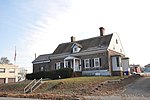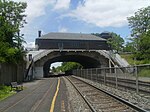Lyndhurst High School
1926 establishments in New JerseyEducational institutions established in 1926Lyndhurst, New JerseyPublic high schools in Bergen County, New JerseyUse American English from August 2020 ... and 1 more
Use mdy dates from May 2021
Lyndhurst High School is a four-year comprehensive public high school that serves students in ninth through twelfth grade from Lyndhurst, in Bergen County, New Jersey, United States, operating as the lone secondary school of the Lyndhurst School District. As of the 2021–22 school year, the school had an enrollment of 789 students and 62.1 classroom teachers (on an FTE basis), for a student–teacher ratio of 12.7:1. There were 112 students (14.2% of enrollment) eligible for free lunch and 21 (2.7% of students) eligible for reduced-cost lunch.
Excerpt from the Wikipedia article Lyndhurst High School (License: CC BY-SA 3.0, Authors).Lyndhurst High School
Weart Avenue,
Geographical coordinates (GPS) Address Nearby Places Show on map
Geographical coordinates (GPS)
| Latitude | Longitude |
|---|---|
| N 40.810425 ° | E -74.126424 ° |
Address
Weart Avenue 401
07071
New Jersey, United States
Open on Google Maps









